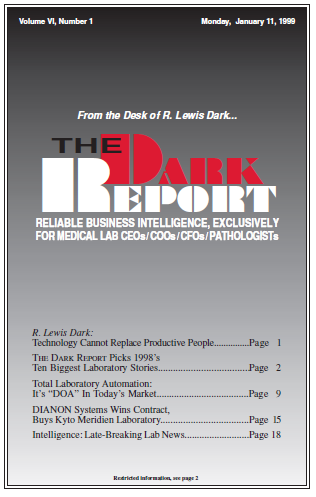CEO SUMMARY: Our story picks for 1998 demonstrate a broad range of subjects. Each affects laboratories and pathology practices in significant ways and should be used to trigger appropriate management strategies. Two essential themes among this year’s ten biggest lab stories: continued downward squeeze on reimbursement and a flood of new technology is on the …
DARK REPORT Picks 1998’s Ten Biggest Lab Stories Read More »
To access this post, you must purchase The Dark Report.


